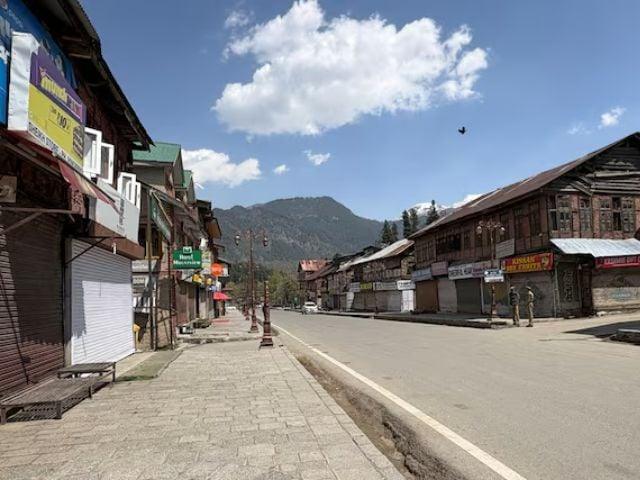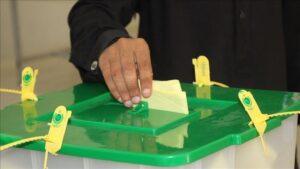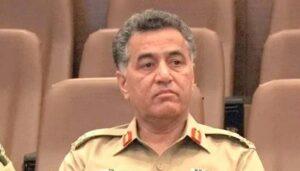Karachi:
What began with an attack in Pahalgama, deep in the busy territory of Kashmir, since then it has become a dangerous escalation between the two nuclear weapons in southern Asia, after India launched attacks not caused in several Pakistani cities. While New Delhi looks at revenge, analysts argue that their actions come less from the strategic need than from the reckless political theater and a calculated deflection of guilt.
None of this is a surprise for those who have seen mercury constantly emerge between New Delhi and Islamabad in most of the eight decades. What many analysts consider predictable is the reflexive response of India to such incidents, an immediate and unwavering attribution of guilt to Pakistan, generally without offering substantive evidence or considering alternative explanations.
However, under political position, the recent attack in Pahalgam reveals the same security and intelligence vulnerabilities seen in pulwama six years ago. The assault did not take place in a remote or without law, but in a very militarized area, firmly under Indian occupation and surveillance. The media reports indicate that the assailants operated for a prolonged period, according to the reports, questioning the victims before executing them. If these reports are precise, the attackers showed remarkable confidence, carrying out their actions without fear of interruption.
Not wasting time, the government of the Bharatiya Janata party led by Narendra led his war rhetoric against Islamabad that revived the same so -called incendiary for the annihilation of Pakistan who followed the pulwama attack, the critics of language argue more as a political theater than in the credible dissuasive.
“The Indian approach to Pakistan remains unchanged in both incidents (the message is clear: Pakistan is always to blame,” said Dr. Claude Rakisits, a geostrategic analyst based in Canberra.
He added: “The Indian government, both nationally and in its external messages, portrays Pakistan as the epicenter of terrorism. For the international community (American, allies, the UN, they say, Pakistan is the center of terror. They did it in 2019, now again in 2025.”
Even in this last attack, Rakisits said, India has not provided any substantial evidence that links Pakistan with the incident. “But that did not prevent them from retaling. The consistency lies in the fact that, at the national level, India hastened to blame Pakistan directly,” he explained.
When asked why India continues to blame Pakistan, Rakisits said: “The key motivation is to divert attention from what is really happening in Kashmir. Take the first Balakot strike: what caused that? The revocation of article 370 in August 2019. Things were already deteriorated, but both at that time as now, the goal is to change the Kashma approach.”
Rakisits, who has proposed a non -supervised basin referendum, since the dismay of New Delhi, explained: “The objective of India is to move the international attention of Kashmira, where political prisoners are locked up without trial, where there is no free press. All this in the world’s largest democracy in the world.”
“And let’s not forget the other objective: distract the world of policies after 2019 of India in Kashmiro that are established to the no Kashmiris there to dilute the demography of the region. That is part of the same strategy,” he warned.
Narrative control
Since the revocation of article 370, the constitutional provision of India that once offered a measure of autonomy, Prime Minister Narendra Modi has worked to project an image of order, development and integration in the disputed region of the Himalayas. His government portrayed movement as a bold step towards democracy and prosperity to the territory, which for a long time has sought the independence of India. However, as Dr. Claude Rakisits observes, the promise was always thin: “Before repealing article 370, Modi and his government laid the foundations. They affirmed that it would bring democracy, development and progress to Kashmir. But clearly, that has not happened. Few bought that narrative, India or abroad. The international community mostly does not care, sad.”
For years, that narrative has rested uncomfortably at the top of a region that many human rights groups now describe as the largest outdoor prison in the world that its streets enrolled, the dissent assumed and the suspended freedoms. But the facade of normality broke with the mortal assault last month in Pahalgam, a picturesque city in the occupied valley. It was the worst attack of this type in a quarter of a century, exposing not only a deep security period but also the fragile nature of India’s control statements.
“This last attack shows that things are not normal in Kashmir, whatever ‘normal’ means there,” Rakisits said. “For Modi, this is deeply humiliating. It exposes reality. That is why it was under pressure to respond, to cover up that humiliation.”
Deliberate climbing
For decades, India and Pakistan have fulfilled a tacit understanding: while skirmishes along the control line were frequent and, to some extent, tolerated, the international border, particularly in Punjab and Sindh, remained a red line.
“By attacking on the bottom of Punjab, India has crossed that threshold,” Rakisits said, adding that Modi’s injured political pride left it with little space to maneuver.
“The April 22 attack was a humiliation: it destroyed the illusion that Kashmir is” normal. “Had to answer.
India’s strikes in the early hours of May 7 killed 31 people in Kashmir administered by Punjab and Pakistan, including a three -year -old girl, and wounded another 57. Since then, a wave of Pakistan reports suggests that their forces have demolished 25 Indian drones that break their airspace. What began with the attack of New Delhi has now approached the region to the precipice of nuclear calamity.
Military humiliation
While New Delhi sought to launch his attacks on the Pakistani soil as a sample of force after the attack in Pahalgam, the narrative began to fray as the events were developed. For hours, India remained silent with the growing reports of Islamabad that several Indian jets had been demolished. Only later he confirmed the loss of two planes, although Pakistan claimed to have demolished five, a figure was still disputed by New Delhi. Defense analysts argue that, regardless of the precise number, the episode gave India tactical blow, giving Islamabad a symbolic advantage in the narrative of conflict development.
“What happened is almost beyond belief,” Rakisits said. “It is reported that India lost between three and five planes, possibly including raffles, among the most advanced and expensive combat planes of its fleet. For the Indian Air Force, it is no less than a debacle. It feeds a growing perception of operational vulnerability, especially after the loss of a plane in 2019.” “
The geopolitical expert of southern Asia said the implications extend far beyond the subcontinent. “This is exponentially more harmful to Prime Minister Modi. The quad composed of the United States, Japan, Australia and India, can now question the reliability of India as a military counterweight for China. After such a performance against a significantly smaller adversary, those doubts are not unfounded.”
“India has recognized the loss of multiple airplanes: Pakistan, on the contrary, claims not to have suffered losses. In terms of perception and messages, that is a clear victory for Islamabad,” Rakisits said.
Reprisals versus restriction
From a broader perspective, Pakistan’s last aerial power exhibition has given India a disturbing sense of Duejà Vu, evoking the 2019 events, when Islamabad returned to an Indian pilot captured after demolishing a plane, taking the moral terrain. This time also, India has suffered losses in the air, according to reports involving some of their most advanced planes, in a blow that analysts say it cuts deeper than the arithmetic of the battlefield. The headlines changed in a matter of hours, from “India attacks Pakistan” to “Pakistan Downs Indian Jets”, a reversion that some experts believe that political damage has inflicted to Prime Minister Narendra Modi in a delicate time.
According to Rakisits, Pakistan “now looks towards the game”, with key international actors, particularly in the United States and China, probably urges restriction. “If I were general, I would stop me now,” he said. “Pakistan seems strong and measured. Push more risky to lose that advantage and drag the region to chaos.” But if Islamabad chooses to attack again, the consequences could be serious. “Modi would have no choice but to answer,” Rakisits warned. “And that was when Asia del Sur could meet the large -scale conflict.”




